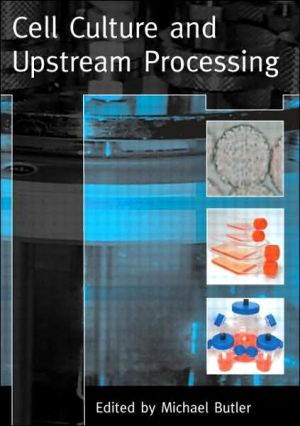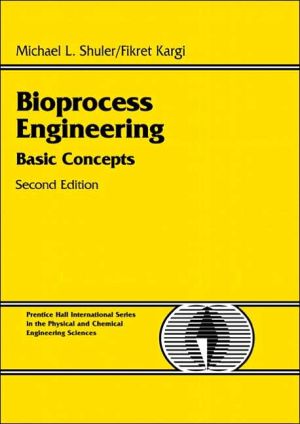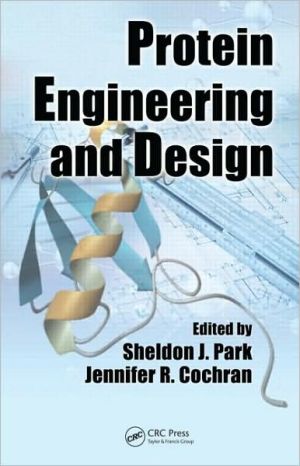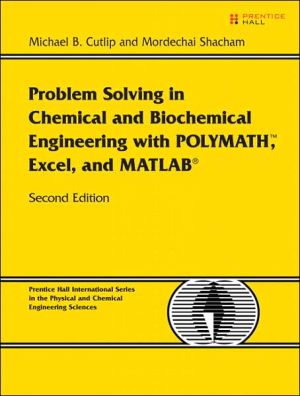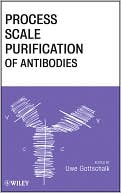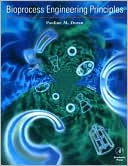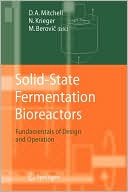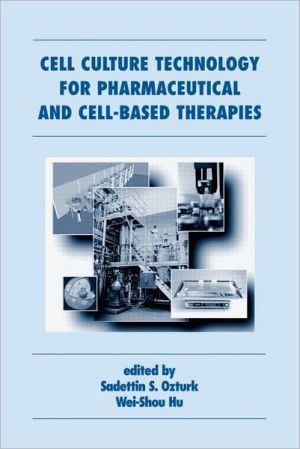Cell Culture and Upstream Processing
Upstream processing refers to the production of proteins by cells genetically engineered to contain the human gene which will express the protein of interest. The demand for large quantities of specific proteins is increasing the pressure to boost cell culture productivity, and optimizing bioreactor output has become a primary concern for most pharmaceutical companies. Each chapter in Cell Culture and Upstream Processing is taken from presentations at the highly acclaimed IBC conferences as...
Search in google:
Upstream processing refers to the production of proteins by cells genetically engineered to contain the human gene which will express the protein of interest. The demand for large quantities of specific proteins is increasing the pressure to boost cell culture productivity, and optimizing bioreactor output has become a primary concern for most pharmaceutical companies. Each chapter in Cell Culture and Upstream Processing is taken from presentations at the highly acclaimed IBC conferences as well as meetings of the European Society for Animal Cell Technology (ESACT) and Protein Expression in Animal Cells (PEACe) and describes how to improve yield and optimize the cell culture production process for biopharmaceuticals, by focusing on safety, quality, economics and operability and productivity issues.Cell Culture and Upstream Processing will appeal to a wide scientific audience, both professional practitioners of animal cell technology as well as students of biochemical engineering or biotechnology in graduate or high level undergraduate courses at university. Doody Review Services Reviewer:Bruce A. Fenderson, PhD(Thomas Jefferson University)Description:Today, over 40 licensed biopharmaceuticals are produced in bioreactors. These molecules include recombinant proteins, nucleic acid-based products, and monoclonal antibodies. Advances in our understanding of cellular metabolism and molecular biology have allowed improvements in bioreactor product-yield that now approach 5 grams/Liter. This book summarizes state-of-the art strategies for producing pharmaceuticals from cultured cells in nine chapters on topics ranging from use of DNA insulator elements and scaffold/matrix-attached regions for enhanced recombinant protein expression to humanization of N-glycosylation pathways in yeast. The experimental findings presented in this book were developed to maximize the yield of proteins in bioreactors and optimize protein function by manipulating glycosylation pathways. The primary focus of this book is on cell biology and biochemistry.Purpose:According to the editor, the aim of this book is to share key developments with a wide audience. He writes, "It is hoped that this [book] will provide useful information for both scientific practitioners of animal cell technology as well as students of biochemical engineering." The authors are all prominent industrial and academic leaders in this field.Audience:The book is written for basic science and clinical researchers, particularly those interested in biochemical engineering and biotechnology. Graduate students in these disciplines will appreciate this overview of current approaches to producing high-yield biopharmaceuticals. Readers will have to have good knowledge of cell biology and biochemistryFeatures:This is not a protocol or methods book. Rather, the authors discuss innovative approaches to industrial-scale production of biological products. Major problems encountered using bioreactor systems are identified, and novel solutions are offered. For example, protein glycosylation affects protein stability and function, and so methods for manipulating O-linked and N-linked saccharide additions must be defined. Similarly, the transfection of cells is often complicated by the selective survival of low-expressing clones. To overcome the presumed negative position effects of randomly inserted DNAs, researchers are now using "chromatin borders" that protect transfected DNA against gene silencing. Each chapter provides an introduction, discussion of strategies that work, and interesting examples of results using black-and-white charts, tables, and gels. Each chapter includes an extensive list of references. The book is carefully edited and includes a helpful list of common abbreviations.Assessment:Future applications of these technologies may revolutionize the pharmaceutical industry, allowing scientists to design "smart therapies" for devastating human diseases. This book highlights key issues in this field and provides a snapshot of successful approaches. I recommend it for all those interested in the use of bioreactors for product development.
Contributors ixAbbreviations xiPreface xiiiOverview on mammalian cell cultureCell line development and culture strategies: future prospects to improve yields Michael Butler 3Introduction 3Cell line transfection and selection 5Increase in efficiency in selecting a producer cell line 6Stability of gene expression 8Optimization of the fermentation process 9Apoptosis 11Bioreactors 11The capacity crunch 12Acknowledgment 13References 13The producer cell lineUse of DNA insulator elements and scaffold/matrix-attached regions for enhanced recombinant protein expression Helen Kim 19Introduction 19The position effect 20Use of insulators and S/MARs can reduce the effects of heterochromatin on transgene expression 20DNA insulator elements 22The scaffold/matrix-attachment regions 23Binding proteins for DNA insulators and S/MARs 25DNA insulators or S/MARs can be incorporated into expression vectors 26DNA insulators and S/MARs act in acontext-dependent manner 30Conclusion 31Acknowledgements 32References 32Targeted gene insertion to enhance protein production from cell lines Trevor N. Collingwood Fyodor D. Urnov 37Introduction 37Identification of genomic 'hot spot' loci 39Recombinase-mediated site-specific gene insertion 39Cre, Flp, and [phiv]C31 recombinase systems 40Recombinase-mediated cassette exchange 40Gene insertion at native 'pseudo' recombinase sites 43Modification of recombinases and their target sites 43Emerging technologies for targeted gene insertion 44Homing endonucleases in HDR-mediated targeted gene insertion 46Targeted gene insertion into native loci by zinc finger, nuclease-mediated, high-frequency, homologous recombination 47Perspective 50References 52Recombinant human IgG production from myeloma and Chinese hamster ovary cells Ray Field 57Introduction 57The need for recombinant human antibodies 57Recombinant antibodies 58Decoupling antibody isolation and production 58Choice of host cells 59Chinese hamster ovary cells 60Rodent myeloma cells 60The glutamine synthetase system 60Cell line stability 61Bioreactor process strategies 62IgG supply during antibody development 62Strategies for cell line engineering during clinical development 63Cost of goods and intellectual property 64Recombinant human IgG production from myeloma and CHO cells 64Creation of CHO and NS0 cell lines expressing IgG 64Cell expansion, subculture and production reactor experiments 65Northern and western blotting 65Comparison of results of transfections from GS-NS0 and GS-CHO 65Dilution cloning and analysis of clonal heterogeneity 66Analysis of instability of a GS-NS0 cell line 67Output of transfections of GS-NS0 and GS-CHO 68IgG production stability of candidate GS-NS0 clones 69IgG production stability of GS-CHO transfectants 70Fed-batch bioreactor process for GS-NS0 and GS-CHO 71Analysis of IgG quality produced from GS-CHO and GS-NS0 bioreactor processes 71Comparative yield of different human IgGs produced from CHO or NS0 cells 74Summary 74Acknowledgments 76References 76Media developmentCell culture media development: customization of animal origin-free components and supplements Stephen Gorfien 81Introduction 81Types of cell culture media 82Components of animal origin 83Segregate 85Mitigate 87Replace 88Summary and considerations for the future 95Acknowledgments 98References 98Glycosylated proteinsPost-translational modification of recombinant antibody proteins Roy Jeffries 103Introduction 103Common post-translational modifications 104Recombinant antibody therapeutics 105Structural and functional characteristics of human antibodies 106The human IgG subclasses: Options for antibody therapeutics 106The structure of human IgG antibodies 108IgG-Fc glycosylation 110IgG-Fab glycosylation 112Cell engineering to influence glycoform profiles 115IgG glycoforms and Fc effector functions 116Glycosylation engineering 118Pharmacokinetics and placental transport 118Antibody therapeutics of the IgA class 119Non-antibody recombinant (glyco)protein therapeutics, 'biosimilar' and 'follow-on' biologics 120Erythropoietin 121Tissue-type plasminogen activator 122Granulocyte-macrophage colony stimulating factor (GM-CSF) 122Granulocyte-colony stimulating factor 122Activated protein C 122Conclusions 123References 123Metabolic engineering to control glycosylation Amy Shen Domingos Ng John Joly Brad Snedecor Yanmei Lu Gloria Meng Gerald Nakamura Lynne Krummen 131Introduction 131Manipulation of fucose content using RNAi technology in CHO cells 132Metabolic engineering of fucose content with an existing antibody production line 132Metabolic engineering of fucose content with simultaneous new stable cell line generation 136Effect of fucosylation levels on Fc[Gamma]R binding 140Effects of fucose content on antibody-dependent cellular cytotoxicity 143Discussion 143Acknowledgments 146References 146An alternative approach: Humanization of N-glycosylation pathways in yeast Stefan Wildt Thomas Potgieter 149Introduction 149Yeast as host for recombinant protein expression 152N-linked glycosylation overview: Fungal versus mammalian 152A brief history of efforts to humanize N-linked glycosylation in fungal systems 154Sequential targeting of glycosylation enzymes is a key factor 155Replication of human-like glycosylation in the methylotrophic yeast Pichia Pastoris 157A library of [Alpha]-1,2 mannosidases 157Transfer of N-acetylglucosamine 158Two independent approaches towards complex N-glycans: How to eliminate more mannoses 159Some metabolic engineering: Transfer of galactose 161More metabolic engineering: Sialic acid transfer. The final step 162Glyco-engineered yeast as a host for production of therapeutic glycoproteins 162N-linked glycans and pharmacokinetics of therapeutic glycoproteins 164N-glycans and their role in tissue targeting of glycoproteins 164N-glycans can modulate the biological activity of therapeutic glycoproteins 165Control of N-glycosylation offers advantages 165Conclusions 166References 166The BioprocessPerfusion or fed-batch? A matter of perspective Marco Cacciuttolo 173Introduction 173Factors affecting the decision on choosing the manufacturing technology 175Technology expertise 175Facility design and scope (product dedicated versus multi-product) 179Impact of switching from perfusion to fed-batch 180Personnel requirements 180Liquid handling 181Equipment 182Manufacturing space 182Decrease in cycle time 182Direct costs of manufacturing 182Productivity and morale 183Conclusions 183Acknowledgments 184References 184
\ From The CriticsReviewer: Bruce A. Fenderson, PhD(Thomas Jefferson University)\ Description: Today, over 40 licensed biopharmaceuticals are produced in bioreactors. These molecules include recombinant proteins, nucleic acid-based products, and monoclonal antibodies. Advances in our understanding of cellular metabolism and molecular biology have allowed improvements in bioreactor product-yield that now approach 5 grams/Liter. This book summarizes state-of-the art strategies for producing pharmaceuticals from cultured cells in nine chapters on topics ranging from use of DNA insulator elements and scaffold/matrix-attached regions for enhanced recombinant protein expression to humanization of N-glycosylation pathways in yeast. The experimental findings presented in this book were developed to maximize the yield of proteins in bioreactors and optimize protein function by manipulating glycosylation pathways. The primary focus of this book is on cell biology and biochemistry.\ Purpose: According to the editor, the aim of this book is to share key developments with a wide audience. He writes, "It is hoped that this [book] will provide useful information for both scientific practitioners of animal cell technology as well as students of biochemical engineering." The authors are all prominent industrial and academic leaders in this field.\ Audience: The book is written for basic science and clinical researchers, particularly those interested in biochemical engineering and biotechnology. Graduate students in these disciplines will appreciate this overview of current approaches to producing high-yield biopharmaceuticals. Readers will have to have good knowledge of cell biology and biochemistry\ Features: This is not a protocol or methods book. Rather, the authors discuss innovative approaches to industrial-scale production of biological products. Major problems encountered using bioreactor systems are identified, and novel solutions are offered. For example, protein glycosylation affects protein stability and function, and so methods for manipulating O-linked and N-linked saccharide additions must be defined. Similarly, the transfection of cells is often complicated by the selective survival of low-expressing clones. To overcome the presumed negative position effects of randomly inserted DNAs, researchers are now using "chromatin borders" that protect transfected DNA against gene silencing. Each chapter provides an introduction, discussion of strategies that work, and interesting examples of results using black-and-white charts, tables, and gels. Each chapter includes an extensive list of references. The book is carefully edited and includes a helpful list of common abbreviations.\ Assessment: Future applications of these technologies may revolutionize the pharmaceutical industry, allowing scientists to design "smart therapies" for devastating human diseases. This book highlights key issues in this field and provides a snapshot of successful approaches. I recommend it for all those interested in the use of bioreactors for product development.\ \
